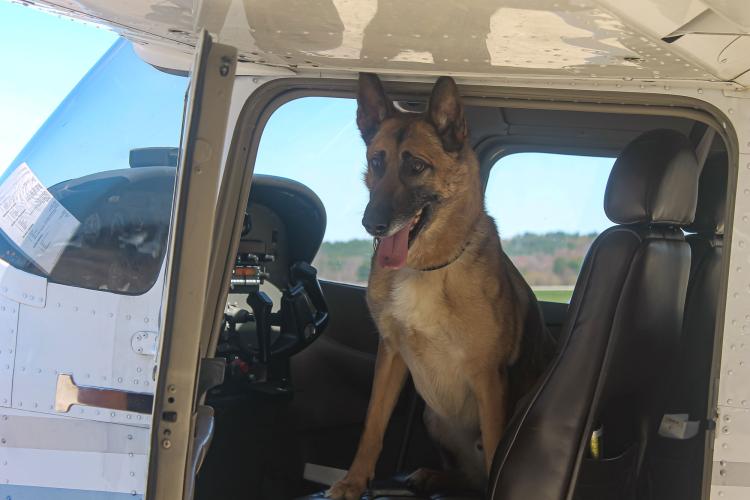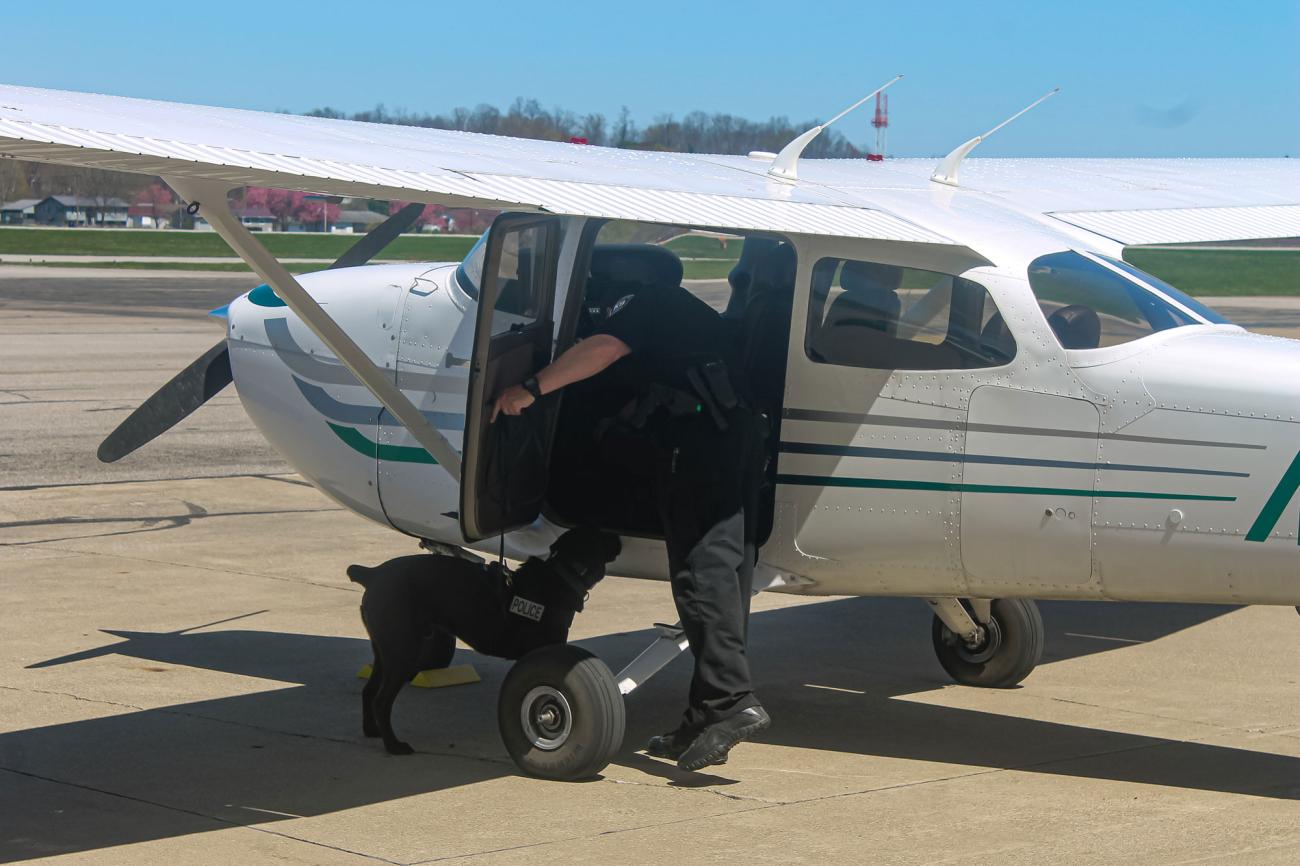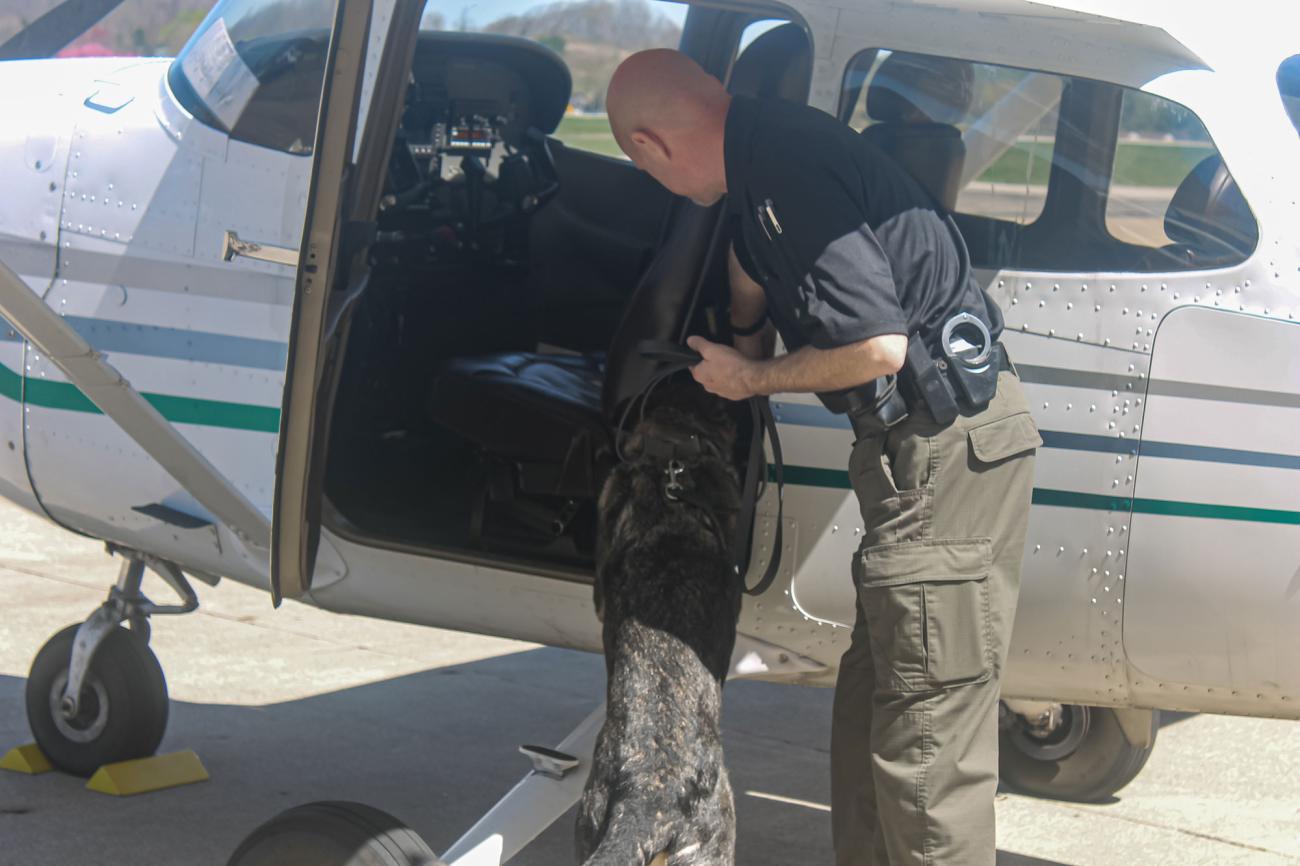

Throughout the year, the members of Ohio University’s precision flight team, the Flying Bobcats, are normally honing their skills in the air to prepare for competitions. While they still prepared for this year’s National Intercollegiate Flying Association’s regional competition to test their skills in precision landing, navigation, inspection and aircraft recognition, they were also able to put their skills to test on the ground to assist law enforcement and their search dogs.
Law enforcement officials from the Ohio University Police Department (OUPD), the Ohio Fire Marshal and the Washington County Sheriff’s Department were preparing to re-certify their search dogs. To earn recertification, the dogs must identify locations in which an item of a particular type is hidden. These locations are typically in buildings, trucks, cars and in this case, airplanes.
“It’s not every day these agencies have the opportunity to train with small aircraft and now that the dogs and handlers have this experience it will help make our community a safer place,” said Alex Lorenz, sophomore aviation student and member of the Flying Bobcats.
Lorenz helped to coordinate the event after OUPD’s Officer King approached the flight team’s coach and assistant professor of instruction, George Armann, about using the aircraft in OHIO’s fleet for training. From there, Lorenz embraced the project, assisting with coordination and involving his fellow Flying Bobcats in the training.
Since the flight team is intimately familiar with the aircraft, in this case two Cessna 172s, a Piper Warrior and a Piper Arrow, they aided Officer King in hiding the compounds the dogs were trained to find. One of the limitations to hiding the compounds on airplane is that certain panels cannot be removed, unless by a certified airframe or powerplant mechanic. The flight team helped to navigate these challenges and ensure that the dogs were challenged in their training.
“Our team knows our airplanes inside and out, so we all got together and suggested some really sneaky places to hide the compounds that were used. I suggested under the fuel cap, we had another team member suggest under an inspection panel, [which] was actually a great idea but our team as pilots were not allowed to remove inspection panels,” said Lorenz.
Ultimately, all three dogs who were in the recertification program were able to identify all the hidden compounds and pass their training.
“It means a lot to us on the Flying Bobcats to have the opportunity to help out our local law enforcement agencies — we are out here working with these local agencies to not just keep our campus a safe place, but surrounding communities as well,” said Lorenz.
The success of this training could not have been possible without the assistance of Officer King and Bach the K- 9 of OUPD, Officer Harlow and Brody the K-9 of the Washington County Sheriff's Department, and Ron Stemen and Rena the K-9 of the Ohio State Fire Marshal. Additionally, Deak Arch, chair and associate professor; Theresa Meyer, chief dispatcher; and Armann, all of the Department of Aviation helped to make the event happen.
“We all hope to work with OUPD in the future to keep doing events like this that will help keep campus a safe place to learn,” said Lorenz.



